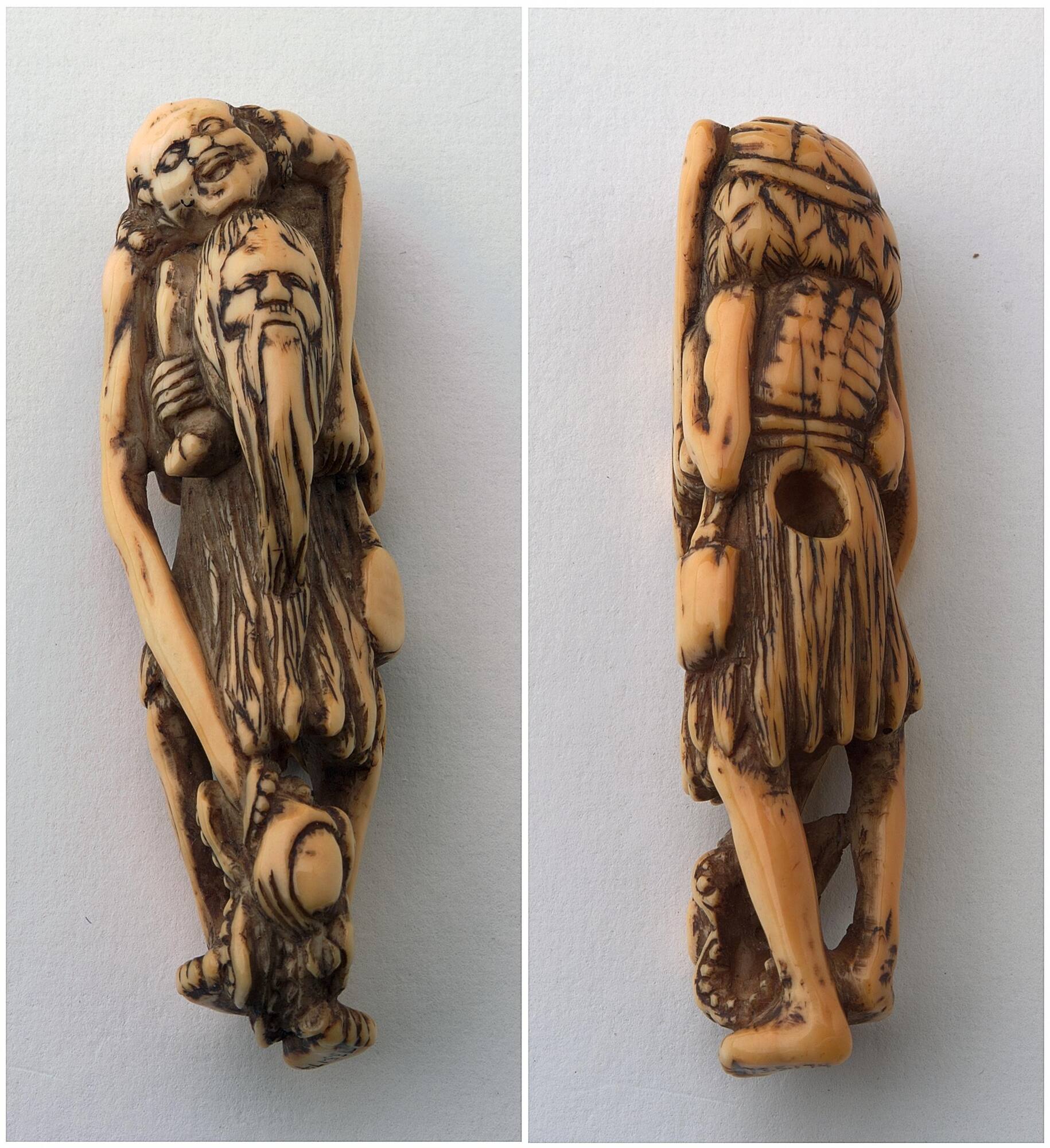
Object Details
Culture
Japan
Date
18th century
Medium
Ivory
Dimensions
Height: 2 3/4 inches (7 cm)
Credit Line
Memorial gift from the Estate of Charles W. Hay, Class of 1925
Object
Number
73.005.174
BRIEF DESCRIPTIONThis is an ivory netsuke in the form of a pair of mythical people known as Ashinaga(…)
BRIEF DESCRIPTIONThis is an ivory netsuke in the form of a pair of mythical people known as Ashinaga and Tenaga.WHERE WAS IT MADE?This netsuke was made in Japan.HOW WAS IT MADE?Netsuke made from ivory, like this one, were hand-carved with knives, chisels and files of different sizes.HOW WAS IT USED?During the Edo period (1603-1868), the standard attire for a well-dressed Japanese man consisted of a kimono tied with a sash. Because kimonos had no pockets, accessory bags and carrying cases (called sagemono: hanging things) were used to hold personal items such as money, medicines, tobacco and seals (a stamp carved with the owner’s name). Silken cords, attached to the sagemono, were threaded through the kimono sash (obi). A toggle, called a netsuke, was attached to the other end of the cord to prevent it from slipping through the sash. To see a netsuke with an inro—one popular type of sagemono that consisted of small, stacked compartments for holding medicines—search for object number 98.087.006 in the keyword search box.The term netsuke comes from the words “ne”, meaning ‘root’ and “tsuke”, meaning ‘to fasten.’ Early netsuke may have been made from found objects such as pieces of roots, nuts, coral and bone. Over time, netsuke production became more and more varied, refined, and innovative, reaching a high point in the early 19th century. Subjects and decoration of netsuke and sagemono reflected the tastes and aspirations of their owners, often infused with an element of comic irony. As clothing traditions modernized, netsuke came to be collected separately from sagemono, and appreciated as sculptural gems in their own right.WHY DOES IT LOOK LIKE THIS?The strange characters depicted in this netsuke are from a Chinese myth about two races of people who live along the coast of the Eastern sea. One race, the Ashinaga, have especially long legs. The other, the Tenaga, have very long arms. They have developed a peaceful and symbiotic relationship; to catch fish from the sea, the Ashinaga stand in deep water and the Tenaga catch the fish with their long arms. Notice how the Tenaga in this carving is holding an octopus, which seems to be wrapping itself around the Ashinaga’s foot.












